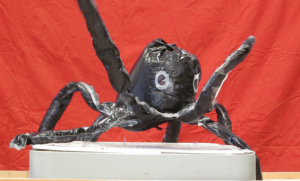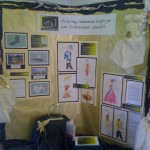Weave silk (weavesilk.com) is a mesmerising generative sound and art tool that allows you to make spectacular kaleidoscopic effects exploring light, mirrors and symmetry with a musical accompaniment. It is free online. Find many examples on this Facebook page. There is also an iOS app version of the tool ‘Silk‘ (£1.99) or a free app ‘Perline Draw by Mojocat‘. with similar properties.
Generative art techniques intersect with computational thinking and offer a creative way to develop beginning programming skills. You can find over 100 short videos introducing generative art computer programming techniques on this Fun Programming site aimed at 11 year olds and above.
Or you could simply use the Weave Silk site to create digital art, thinking about mixing colours and a range of up to six fold rotational symmetry. The option to share the URL means that others can see an animation of how you created your image.










